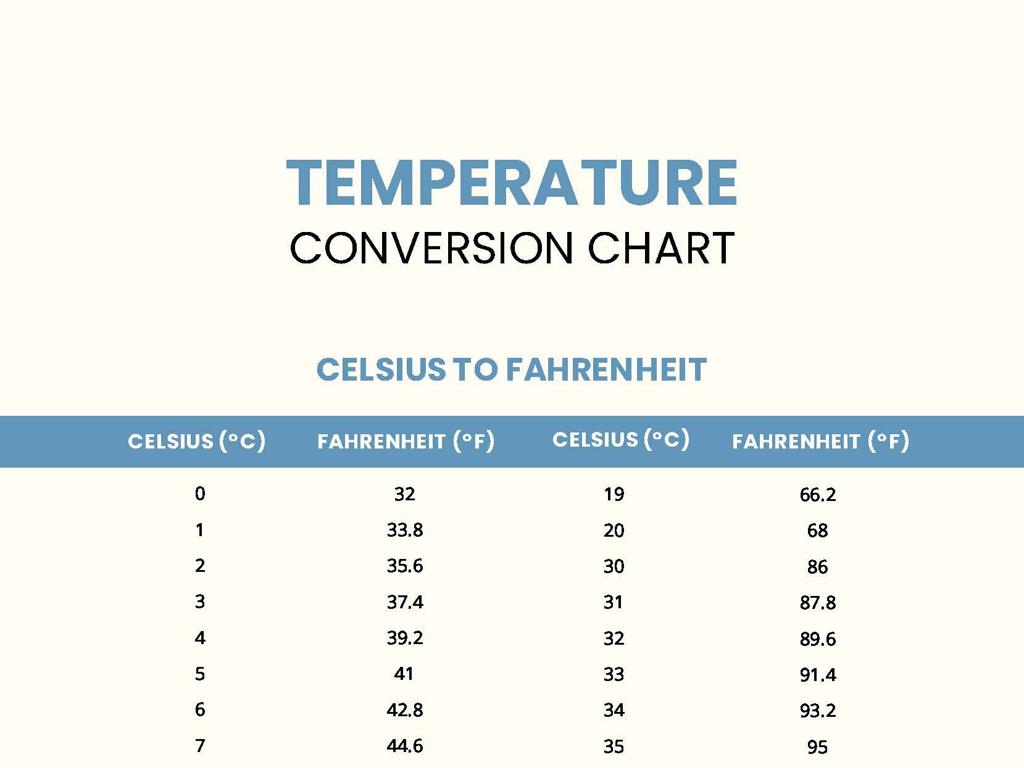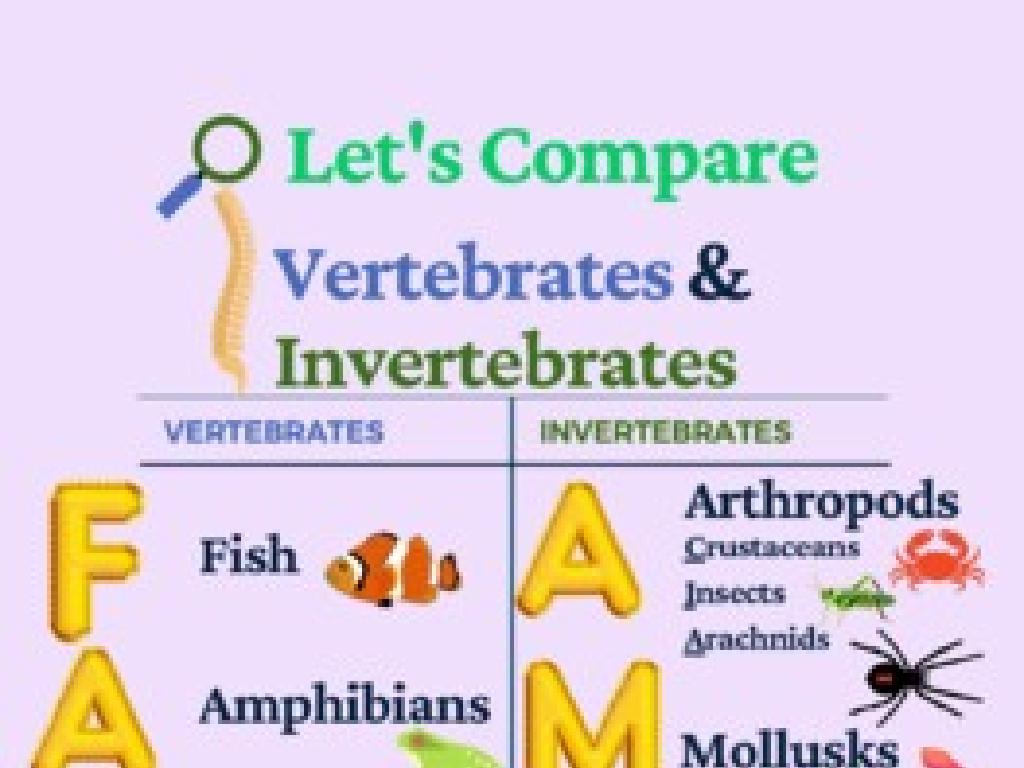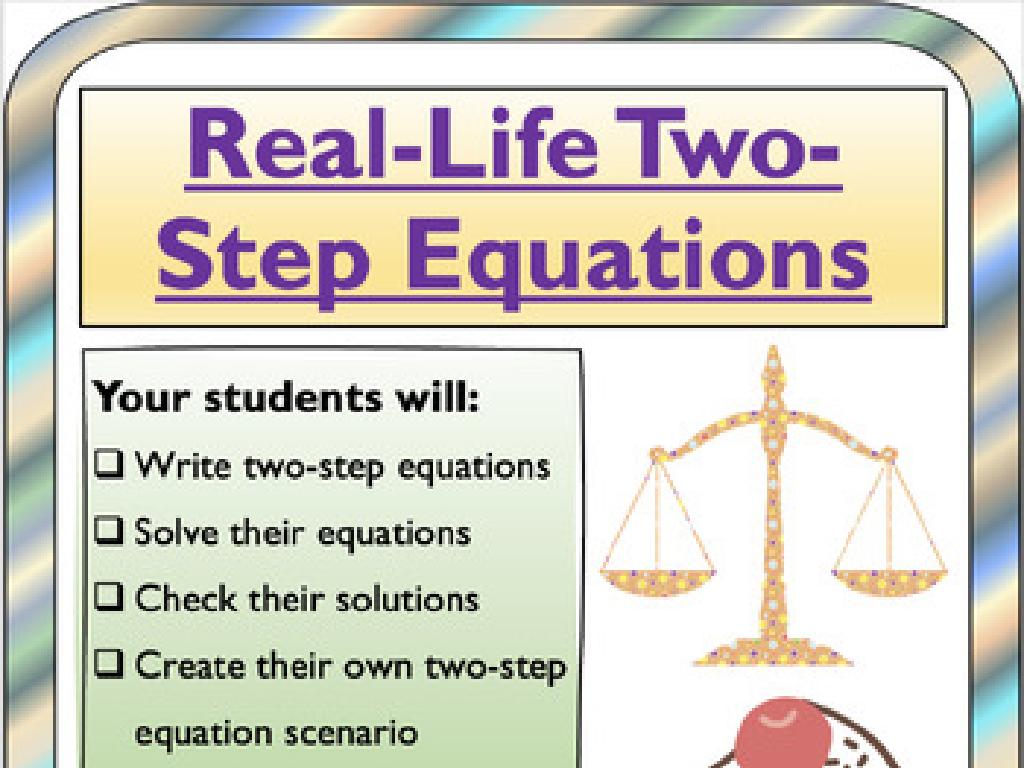Predict Temperature Changes
Subject: Science
Grade: Fifth grade
Topic: Heat And Thermal Energy
Please LOG IN to download the presentation. Access is available to registered users only.
View More Content
Introduction to Heat and Thermal Energy
– What is thermal energy?
– Thermal energy is the energy that comes from heat.
– Sensing heat around us
– We feel heat through our skin, which is sensitive to temperature changes.
– Heat’s effects on matter
– Heat can melt ice, boil water, and cook food.
– Daily examples of heat changes
– Notice how the sun warms the ground, or how ice cream melts on a hot day.
|
Begin the lesson by explaining that thermal energy is the energy that comes from heat, which is produced by the movement of particles within objects. Discuss how we can feel heat through our skin and how different temperatures feel. Explore how heat can cause physical changes such as melting, boiling, or cooking, and encourage students to think of examples they’ve seen in their daily lives, like the sun warming the ground or ice cream melting. This will help them connect the concept of heat and thermal energy to real-world experiences.
Understanding Temperature
– Temperature: hot or cold measure
– It’s a degree of warmth or coldness that can be measured.
– Thermometers: temperature tools
– Tools that show temperature using scales like Celsius or Fahrenheit.
– Temperature vs. Heat
– Heat is energy transfer, temperature is how hot or cold.
– Importance of temperature in weather
|
This slide introduces the concept of temperature as a measure of how hot or cold something is, which is a fundamental aspect of thermal energy. Explain that thermometers are the tools we use to measure temperature, and they can use different scales, such as Celsius or Fahrenheit. Clarify the difference between temperature and heat, with temperature being the measure and heat being the energy transfer between objects. Emphasize the importance of understanding temperature in everyday life, such as in weather predictions. Use examples like feeling the warmth of the sun or the coldness of ice to illustrate the concept of temperature.
Sources of Heat: Natural and Man-Made
– Natural vs. artificial heat sources
– Natural sources like the sun, and artificial like heaters
– The sun: Earth’s primary heat source
– The sun provides warmth and energy to Earth
– Heat production in our homes
– Ovens, furnaces, and heaters keep our homes warm
– Understanding heat’s origin
|
This slide introduces students to the concept of different sources of heat, both natural and artificial. Emphasize the sun’s role as the primary source of heat for our planet, affecting weather and climate. Discuss how heat is generated in homes using various appliances and systems, such as ovens for cooking and furnaces for warmth. Encourage students to think about the heat sources they encounter daily and how these sources impact their lives and the environment. This will lay the groundwork for understanding how temperature changes can be predicted based on the knowledge of heat sources.
Heat Transfer: Moving Heat Around
– Heat moves in three ways
– Conduction: Touching transfers heat
– Example: A spoon heating up in hot tea
– Convection: Fluids move heat
– Example: Warm air rising, cool air sinking
– Radiation: Heat through space
– Example: Feeling the sun’s warmth on your skin
|
This slide introduces the concept of heat transfer, a key topic in understanding thermal energy. Heat can move in three primary ways: conduction, convection, and radiation. Conduction occurs when heat is transferred through direct contact, such as when a metal spoon gets hot from sitting in a cup of hot tea. Convection happens in fluids (liquids and gases) when warmer areas of a fluid rise and cooler areas sink, creating a cycle that distributes heat, like in a pot of boiling water. Radiation is the transfer of heat through space, such as feeling the warmth of the sun on your skin. Use everyday examples to help students relate to these concepts. Encourage them to think of more examples and discuss how heat transfer affects our daily lives.
Predicting Temperature Changes
– Factors affecting temperature
– Sunlight, time of day, seasons, and geography can change temperature.
– Observe patterns for prediction
– Notice how temperature changes at different times or seasons.
– Use historical data
– Look at past temperature records to guess future trends.
– Making informed predictions
|
This slide introduces the concept of predicting temperature changes by understanding various factors and observing patterns. Students should learn that temperature can be influenced by the amount of sunlight, the time of day, the current season, and the geographic location. Encourage them to observe and record daily temperatures to see patterns, such as warmer temperatures in the afternoon and cooler in the morning. Show them how to use historical weather data, which meteorologists use to predict future temperatures. This will help them grasp the basics of making informed predictions based on evidence and trends.
Class Experiment: Measuring Temperature
– Gather materials for the experiment
– Each student needs a thermometer and cups of water
– Measure water temperatures
– Use the thermometers to measure the temperature of each cup
– Record your temperature findings
– Write down the temperature from each cup on your worksheet
– Discuss results with the class
– We’ll talk about how the temperatures differed and why
|
This class activity is designed to give students hands-on experience with measuring temperature, an essential skill in understanding heat and thermal energy. Provide each student or group with a thermometer and several cups of water at varying temperatures. Guide them on how to read the thermometer accurately and safely handle the equipment. After recording the temperatures, lead a class discussion on the observed temperature differences. Possible variations of the activity could include measuring temperatures in different locations, comparing sunlit areas to shaded ones, or observing how temperature changes over time in the same spot.
Analyzing Our Findings: Temperature Data
– Review collected temperature data
– Discuss observed experiment patterns
– Did the temperature rise or fall? What was the pattern?
– Using data to predict changes
– If we see a pattern, we can guess future temperatures!
– Importance of prediction in science
– Predicting helps us prepare for weather and understand nature.
|
In this slide, we aim to consolidate the students’ understanding of the temperature data they have collected from an experiment. Begin by reviewing the data as a class and then discuss any noticeable patterns, such as consistent rises or drops in temperature at certain times. Explain how identifying these patterns can help us make predictions about future temperature changes. Emphasize the value of prediction in science, particularly in meteorology, where it is crucial for preparing for the day-to-day weather and long-term climate changes. Encourage the students to think about how this skill can be applied in real-world situations, such as dressing appropriately for the weather or planning activities.
Real-life Application: Predicting Temperatures
– How do meteorologists forecast weather?
– They use tools like satellites, radars, and computers to analyze weather patterns.
– Why is temperature prediction vital?
– Knowing the weather ahead helps us plan our activities and stay safe.
– Students applying weather knowledge
– Observe the sky and note changes; compare with weather reports.
– Activities to practice prediction
|
This slide aims to connect the concept of temperature prediction with its practical use in everyday life. Meteorologists use advanced technology to predict weather, which is crucial for agriculture, transportation, and emergency services. Emphasize the importance of accurate temperature predictions in planning daily activities and ensuring safety. Encourage students to observe weather patterns and relate them to actual meteorological reports, fostering a practical understanding of the topic. As an activity, students could track local weather forecasts, record daily temperatures, and compare their predictions with actual weather conditions to understand the complexities of temperature prediction.
Class Activity: Predict Tomorrow’s Temperature
– Review today’s weather data
– Use graph paper for prediction
– Graph today’s temperature changes over time
– Draw your temperature forecast
– Use colored pencils to mark predicted temperatures
– Discuss predictions with classmates
|
This activity is designed to help students understand how to use current data to predict future outcomes, specifically in the context of weather and temperature. Provide students with weather reports from the day and have them analyze the data to make predictions about tomorrow’s temperature. They should use graph paper to visually represent the data and their predictions, using colored pencils to differentiate between observed and predicted temperatures. After completing their graphs, students should discuss their predictions in small groups to compare reasoning and methods. Possible variations of the activity could include predicting temperatures for different times of the day or for the next week using historical data.
Conclusion: Heat, Thermal Energy, and Temperature
– Recap: Heat vs. Thermal Energy
– Heat is energy transfer; thermal energy is total kinetic energy of particles.
– Predicting Temperature Changes
– Use patterns like weather changes to predict temperature.
– Encourage Curiosity in Science
– Questions: Understanding Concepts
– Are there any concepts that are unclear or need more explanation?
|
As we wrap up today’s lesson, let’s review the key concepts. Heat is the transfer of energy from a warmer object to a cooler one, while thermal energy is the total kinetic energy of particles in an object. Understanding these differences helps us predict temperature changes, such as how the weather gets warmer during the day and cooler at night. Encourage students to ask questions and explore more about how heat and temperature affect our daily lives. This will not only solidify their understanding but also spark their interest in the wonders of science.






